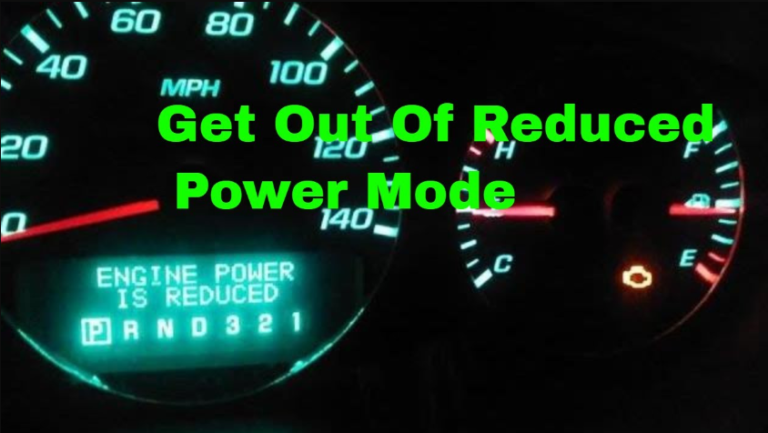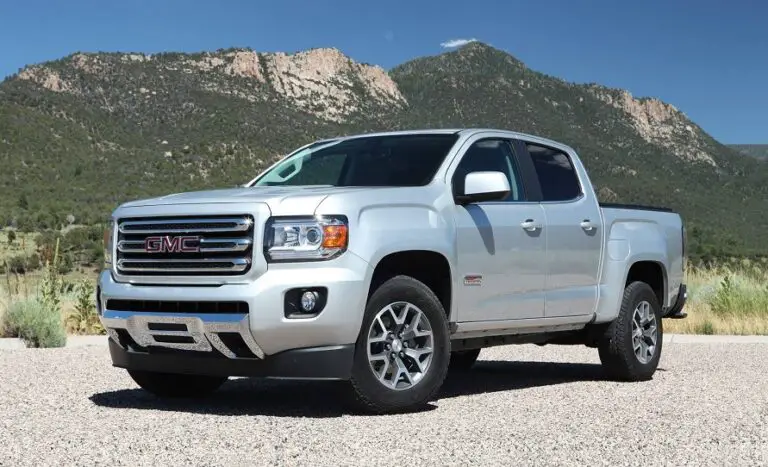How much does it cost to install a new exhaust system
A properly functioning exhaust system in your car ensures that it will run for a long time and efficiently. You’re probably wondering about the cost for new exhaust system we go through it in detail below.
Corrosion, mechanical damage, and material deterioration are the three most common causes of exhaust system failure. Being under a vehicle, where it is exposed to harsh environmental conditions, causes rusting of almost all components: the vibration silencer, catalytic converter, mufflers, exhaust pipes, and hangers.
Fortunately, it is not always necessary to change the entire system or perform an oil change. If the damage is minor, you can patch it up, use welding, or replace some parts.
However, when deciding on a cheap exhaust system replacement, you should expect a repeat failure within a few months of such a repair.
We’ll show you the typical installation cost to replace a new exhaust system for many common automobile models, as well as the price of individual parts.

What exactly exhaust system do?
One of the main systems in the vehicle is the exhaust system, which is designed to release the exhaust gases from the engine combustion chamber. It is noteworthy that, when in good condition, the exhaust system has minimal effect on engine operation.
In addition, it also cools these gases, which helps reduce their toxicity and even their noise level.
Cars with a damaged exhaust pipe will fail emissions testing, preventing you from lawfully registering your vehicle.
Cost of replacing the entire exhaust system
You may be wondering how much a new exhaust system would cost. It ranges from $320 to $1,250, depending on whether it is a complete system, the kind of exhaust system, and the exhaust system elements.
It all depends on the model of the car, the design features of the exhaust system, and the degree of its wear. On some cars, you have to dismantle the intake pipe or manifold and remove the resonator.
One strategy to keep prices low and save a lot of money is to determine whether or not the complete exhaust system has to be replaced. In most circumstances, you may simply need to replace the defective component.
For example, if you merely need to repair the muffler, you can expect to pay between $90 and $220, and replacing a damaged catalytic converter normally costs between $220 and $400 if you want good quality. These costs will, of course, vary depending on the type and model of your vehicle.
The real cost will be determined by the age of your vehicle, the degree of the damage, and the mechanic’s location.
What includes in entire exhaust systems repair service
- Inspection of tightness and determination of the place of damage.
- Check the condition of flexible hangers and their possible replacement.
- Sealing the joints of individual elements.
- Spot welding of corroded parts.
- Replacement of damaged system components.
- Rechecking the system for leaks.
What affects the final cost of the work?
The final cost may depend on the model of the car, the design features of the exhaust system and the degree of its wear.
1. Exhaust system type
When purchasing a new exhaust system for your vehicle, you will have few choices: OEM exhaust system or aftermarket exhaust system.
Original Equipment Manufacturer: these are exhaust systems manufactured by the same firm that produced your vehicle.
The cat-back exhaust systems are the most frequent form of aftermarket exhaust system. It contains, as the name implies, the exhaust pipes, muffler, and all other elements following the catalytic converter.
The most significant benefit of choosing a complete cat-back or axle-back exhaust system is the ease of installation.
All else being equal, a cat-back or axle-back exhaust systems will outperform a muffler alone.
Companies other than the one who built your automobile manufacture aftermarket products. OEM parts are often more costly than aftermarket parts.
They do, however, often last longer and may fit your vehicle better than aftermarket products. Consider the pricing and quality of the items while deciding between OEM and aftermarket components.
2. Vehicle construction
The type of car you have has a big impact on the cost of updating your entire exhaust system. For a small car, the cost to replace it may be around a few hundred dollars.
However, if you have a huge SUV or truck, the replacement may cost more than a thousand dollars. The work required to replace your exhaust system is also affected by the type of car you own.
In general, replacing an exhaust system on a small car takes less time than replacing one on a large vehicle. Smaller automobiles will have cheaper labor expenses as a result.
3. The cost of exhaust system parts
The best exhaust systems are made of stainless steel or aluminum, which are very resistant to corrosion. Mid-level exhaust systems are made from less expensive mild steel, but they are more resistant to corrosion.

Cost for new exhaust system per component
Exhaust systems may contain more components, but they invariably have these three.
- Muffler
- Exhaust manifold
- Downpipe
Muffler
There are two types of mufflers: mechanical and acoustic. Mechanical mufflers are made up of a type of mechanical filter that is installed in the engine’s exhaust system.
They trap particulate matter and help reduce emissions. Acoustic mufflers are similar to mechanical ones, but they use sound waves to reduce emissions. Both types use a muffling chamber that may be removable. Each type has its advantages and disadvantages.
The mechanical muffler has better filtering capacity than the acoustic one because it uses a mechanical filter to trap particulate matter before emitting the gases into the air stream.
A standard muffler costs between $60 and $100. Some high-end variants cost more than $100, while a good-quality muffler will cost you around $75. Installation labor costs between $90 and $200 on average.
Exhaust manifold
The cost of an exhaust manifold depends on its size. For example, a small exhaust manifold rings up at $150, while a large one costs $1,400. It also depends on the type of metal used to make the manifold. The most expensive part is the flange. It costs $60.
The next-most expensive part is the clamps. It costs $40. And finally, the least expensive part is the O-ring. It costs $20. The total cost of an exhaust manifold is $420. This includes all of the materials and labor. The total cost will increase if additional parts are needed (clamps, flanges, or O-rings).
Downpipe
The exhaust pipe connects your car’s exhaust system to the turbocharger, directing gases away from the engine. The downpipe also contains the catalytic converter in your vehicle. Hazardous exhaust is converted into less toxic chemicals such as water vapor and carbon monoxide by the catalytic converter.
A new pipe will cost you between $210 and $290 to purchase and install. To avoid corrosion, most pipes are made of stainless steel.
Downpipes are often less costly than exhaust manifolds, although they serve the same purpose. Keep in mind that if downpipe clamps and rings are not included, you may have to pay an additional fee. These parts are fairly inexpensive, generally costing less than $25.
Tips for Exhaust Systems
Supposedly, there are thousands of different exhaust tips for sale. All in all, you get what you pay for. Stainless steel tips are exceptionally resistant to corrosion, but they don’t shine as hard as chrome tips.
Titanium is another material used for exhaust tips. It is extremely resistant to corrosion, although, like stainless steel, it tends to turn blue after use. If you like the color blue, then titanium is definitely your best choice. If you want a gleaming look, chrome is a better choice.
If you want a tip that can be polished occasionally but is weather-resistant, stainless steel is a good choice.
Signs of exhaust system failure
Many car owners, unfortunately, ignore various minor problems with their car’s exhaust system.
This should not be done, because small malfunctions can soon turn into large-scale and expensive repairs. Not only that, but it can also lead to passengers being poisoned by exhaust poisons and the vehicle catching fire.
- The cabin floor becomes heated. Heat shields are insufficiently effective. When the exhaust pipe becomes excessively hot, the problem must be addressed immediately else, a fire might quickly start.
- The muffler began to rub against the frame or the bottom. If the pipe starts rattling as you pass a bump (which is common on our roads), you must replace the hangers since the old ones are ruined.
- The exhaust sound is no longer the same. Engine failures are not reflected in the auditory backdrop instead, it signals a breakdown of the entire exhaust system.
- If the owner examines attentively, he can see outside damage to the exhaust pipe.
- The automobile has a strong odor of exhaust smoke. The reason might be a little depressurization of the exhaust system. Check the exhaust system first if the exhaust smells strongly and has a dark hue. If it is satisfactory, search for engine issues.
- It is discovered that the exhaust system is obstructed. A clog may happen anyplace. It is the result of structural pieces falling within. Typically, the engine loses power and the exhaust system begins to emit a muffled sound.
- There is a “whirring” sound coming from the exhaust system. It’s a distinct sound that changes with engine speed. It is caused by fractures in the muffler joints as well as burnt gaskets. As a result, the pressure in the system lowers and gases begin to enter the vehicle.

What goes into full exhaust system?
The exhaust system, contrary to frequent opinions, is a very important system of the car. The vehicle exhaust system is a complex, multi-component unit consisting of many individual components.
1. Manifold
Is an important part of the entire exhaust system, designed to remove the combustion products from the engine chamber. In doing so, the resonating waves of the exhaust help to improve the purging and filling of the combustion chamber itself. Most often, the exhaust manifold is made of cast iron.
2. Exhaust pipes
Exhaust pipes are the metal tubes that connect the various components of the exhaust system. The diameter of the pipes depends on the make and model of your vehicle.
3. Catalytic Converter
Reduces the harmful effects of exhaust gases on the environment. This exhaust component is not installed on all vehicles.
4. Oxygen Sensor
By measuring the quantity of oxygen in the exhaust fumes, it is possible to determine the “output.” In other words, the oxygen sensor assesses if the engine is functioning optimally, whether the ECU calculations are correct, and whether they need to be adjusted.
5. Muffler
The muffler dampens the sound wave to an appropriate level for humans by using sequential chambers of varying diameters. The muffler also reduces the temperature of the exhaust gases substantially.
6. Tailpipe
The tailpipe is the exhaust system’s last component, functions as the vehicle’s last exhaust of consumed gases.
7. Resonator
equalizes the sound waves, particularly the peak low-frequency vibrations, and also slows the passage of the exhaust gases (which may not be present in some automobile models).
How can you identify if your car requires a new Exhaust System?
The occurrence of problems is not difficult to detect. You’ll notice a terrible odor of exhaust fumes in the cabin, in addition to the deafening boom and loud popping sounds. If you drive a car with a faulty exhaust system for an extended period of time, you will have health concerns.
Poor starting, lower engine performance, and irregular engine operation are further indicators of a defective exhaust system. In this scenario, the problem is a faulty catalytic converter.
If you hear a rumbling sound, as if something is hitting the bottom of the car, it might be due to a failure of the mounting parts, and the fasteners should be replaced.
The entire exhaust system fails not only due to mechanical deterioration or because it has reached the end of its useful life. Failure is frequently caused by unfavorable environmental effects in major cities.
This is especially true in the winter, when salt and other chemicals, as well as continual dampness, are prevalent on the roadways.
The importance of repairing the entire exhaust system
A correctly functioning exhaust system performs three functions: it decreases the noise level of the vehicle, minimizes the toxic exhaust discharged into the environment, and eliminates dangerous burning chemicals from the internal components.
It is critical to maintain the exhaust systems of your vehicle in excellent working order.
If you see any fractures or holes in the exhaust system, fumes might seep from the system due to cracks and perforations.
The automobile stalls, and its fuel economy decreases. If you notice a drop in fuel economy or your car stops, it might be because the exhaust system is blocked and not functioning correctly.
These are just a few indications that the exhaust system needs to be replaced. If you experience any of these issues, you should get your automobile evaluated by a professional.

Several methods to save money replacing your exhaust system
If the expense of rebuilding your complete exhaust system concerns you, there are a few things you can do to save costs.
Get an estimate from your mechanic
Before you begin any work, consult with your technician and obtain an estimate. This will give you a decent indication of how much the job will cost and whether there are any cost-cutting measures you can take.
Inquire about used components
In certain circumstances, you may replace just a few pieces rather than the full system. Discuss used components with your technician to determine if that is a possibility for you.
Undertake the task yourself
You can undertake the task yourself if you are handy and have some expertise repairing autos. It can save you a lot of money, but be sure you understand what you’re doing.
Useful tips
- Don’t disregard even seemingly slight damage to the exhaust system, since it might impair engine performance.
- An extremely loud exhaust system might result in a fine. In the worst-case scenario, the police will seize the car registration certificate.
- Never use low-quality engine oils or inexpensive unstable replacements, which are prone to rust after only a few months.
How can I keep my exhaust system in good working order?
First of all, it must be protected from corrosion. Here, it is worth remembering to wash it thoroughly after the winter (of course, when it cools down) to clean it from road salt residue. It is also worth parking the car on dry ground, not on wet grass.
Special high-temperature paint can be used to protect individual system components (pipes and mufflers) from corrosion. In addition, it is worth checking the condition of the suspensions.
Catalysts and particulate filters are most durable in cars that are frequently driven out of town. Injection system failures, which destroy diesel particulate filters, and ignition system failures in tank cars, which cause irreversible destruction of the catalytic converter, should also be quickly repaired.
Asked questions:
What is the function of exhaust system?
The exhaust systems are designed primarily to remove the exhaust gases from the engine cylinders and outside the vehicle, thus avoiding poisoning those inside.
At the same time, as the various components of the system pass through, the exhaust gases are cooled and their toxicity and exhaust noise are reduced.
Basic functions of the car exhaust system
- Removes combustion byproducts from the cylinders, such as exhaust gases.
- Smoke is discharged in such a way that the driver and passengers are not at risk of inhaling it.
- Ensures that the drive operates efficiently regardless of load.
- Noise reduction.
How much does it cost to change the exhaust system?
Depending on the type and model of your vehicle, the full exhaust system cost to replace ranges from $320 to $1200. The average cost is $700, however this varies based on the material and kind of exhaust system. For labor expenditures, you should budget between $90 and $200.
The cost to replace a new exhaust system is also influenced by the materials utilized and the kind of system being replaced.
Is a new exhaust system worth it?
The exhaust system plays a significant part in an automobile. The exhaust system enables the vehicle to make the most of its available power.
Your automobile will benefit from an exhaust system replacement in the following ways:
- Power increase
- Sound modification
- In the future, changing the exhaust system ensures the longevity of the vehicle because exhaust systems are not of the highest quality in the manufacturer’s factories.
- You won’t have to worry about future difficulties if you replace the exhaust system.
What are the symptoms of a damaged exhaust system?
There are various signs that your exhaust system is damaged such as:
- Very loud noise – the cause is damage to the muffler or corrosion through one of the exhaust pipes.
- Tearing or breakage of the exhaust system is damage. It can be caused by corrosion (fasteners on system components made of metal) or a collision with something on the road, especially dirt.
- Very high fuel consumption and engine power decrease.
- Engine stalling, starting problems, throttling, check engine lights, exhaust in coolant, exhaust smell in coolant.
These are just a few symptoms that the exhaust system needs to be replaced. If you experience any of these issues, you should get your automobile evaluated by a professional.
Final thoughts
As you can see, the exhaust system is critical to the car’s proper operation. A contemporary automobile with an internal combustion engine would be unimaginable without it.
The most prevalent causes of damage include environmental influences, natural wear and tear over time, and low-quality components. A quick visual check will generally reveal the problem, and listening to the motor’s sound can clarify it.
When it’s time to change the exhaust system, you’ll notice a distinct noise, roar, or rattle instead of the engine’s quiet hum. The entry of exhaust gases into the interior is another reason to inspect the exhaust system.
Taking your automobile to a technician is the easiest way to get an estimate. However, if you know how to do it yourself, you may save a lot of money. Just be sure you understand what you’re doing before you begin.
Read also: Everything About How Much Do Truck Drivers Make?

![How To Get More Power Out Of My 4.7 Dodge? [Explained]](https://truckguidepro.com/wp-content/uploads/2021/08/How-To-Get-More-Power-Out-Of-My-4.7-Dodge-768x480.jpg)




![How Replace Your Driver Side Window? [Easy Steps]](https://truckguidepro.com/wp-content/uploads/2021/08/How-Replace-Your-Driver-Side-Window-768x480.jpg)